Lal Kot is the oldest known fort of Delhi. Besides, the mythical Indraprastha is about which we do not know much. Sometimes it is referred to as the original red fort of Delhi. There is not much known about this fort and its history can be summarized in a few lines. The Tomar King Anangpal II built it in 736 AD. His name is also inscribed on the Iron Pillar in Qutub Complex.
It was rebuilt in the mid-11th century by Prithvi Raj Chauhan and re-named Qila Rai Pithora. The interesting bit is that Anangpal of the Tomar dynasty is said to be the descendant of Pandavas or Arjuna to be precise.

Chauhans were also related to Tomars by marriage. And one of the sons-in-law of the Tomar dynasty succeeded to the throne and hence the baton passed to Chauhans. The Tomars gave the name Dilli or Dhilli to this city. After this, the slave dynasty came and ruled over Delhi and the rest is better-known history.
Lal Kot – Places to visit in Delhi
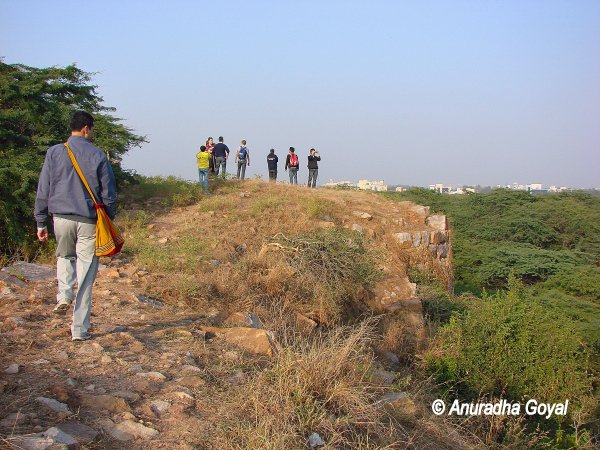
As of now behind the Qutub complex, the ruins and remains of Lal Kot still survive. The most visible parts of Lal Kot are in Adham Khan’s tomb, which is probably one corner of the fort. There are probably tanks, various buildings that could be living quarters, and a very broad wall with huge semi-circular bastions at irregular intervals. At one point there seem to be two walls, one external and one internal.
The walls are mighty and broad even as ruins, giving a glimpse of the fort that they would have guarded. There is an apparent water tank, which is full of foliage as of now. There is another plain land, which is used as a cricket ground by kids. Which could be another tank or some part of the fort that requires a huge plane
Water Tank
There is an apparent water tank, which is full of foliage as of now. There is another plain land, which is used as a cricket ground by kids. Which could be another tank or some part of the fort that requires a huge plane area.
Graves
On the walls, there are some signs of restoration as here and there some cement plastering can be seen, but we do not know who did that. There are two graves, apparently one male and one female, that lie between the two walls. Some say that they belong to a couple and some say that they belong to the soldiers. But whoever they are, they are revered even today as the graves were adorned with new Chaddars. Some distance ahead, there is a dargah of Baba Akbar Shah. Now we could not make out much about the Baba. But from the shops outside it looks like many people come here to pay respects.
Well with healing powers
There is also a well outside this dargah that is said to have healing powers. This is possible because Gandhak ki Baoli is not too far from here. Maybe the groundwater in this area had sulfur, which has curative properties.
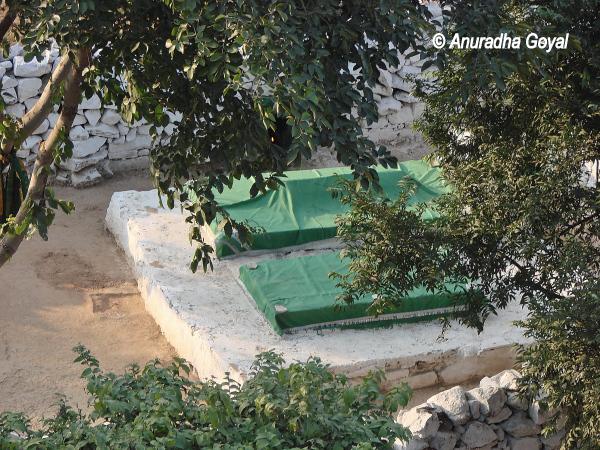
Standing there on the walls, one wonders how come some excavations have not been carried out here. And how come there are no efforts to restore this important part of the city’s past? And this led me to basic search on the ASI website. This is what they have to say about this site.
ASI Information
Lal Kot is an irregular fort enclosure within which the famous Qutub Minar stands. It is reputed to have been built by a Tomara Anangapala, possibly to be identified with Anangapala II, who figures in certain dynastic lists and whose name with Samvat 1100 (A.D. 1052) is inscribed on the iron pillar of Chandra. It’s an extension on the north and west bounded again by massive stone walls, is known as Qila Rai Pithora and is ascribed to the Chauhan king Prithviraj III, also known as Rai Pithora, who was defeated by Muhammad Ghuri.
The two enclosures together have long been known as the first city of Delhi of early medieval times.
Some points along the fort walls and inside it were probed in 1957-8 and 1958-9 by Y.D. Sharma, ASI in order to examine the reasons behind the obvious structural differences between the w. and e. flanks of the LaI-Kot rampart walls. and also to ascertain if the pre-Sultanate occupational levels could be distinguished from the Sultanate ones.
ASI Information Continued
A small trench to the south of the Qutub Minar has indicated that this was the residential part, at least in Sultanate times, for on either side of a 1.52 m wide street here flanked portions of houses. Drains from these houses join an open lime-plastered gutter running in the middle of the street, which shows several road levels.
The pottery from these excavations can be divided into two phases. From the lower levels come plain red wares, sometimes slipped, the main types of which correspond generally with those of the topmost stratum of Ahicchatra, c. 850-1100. From the middle depth of the upper levels come glazed ware and associated black-slipped grey ware. The two phases are separated here by a deposit of ash and earth mixed with debris.
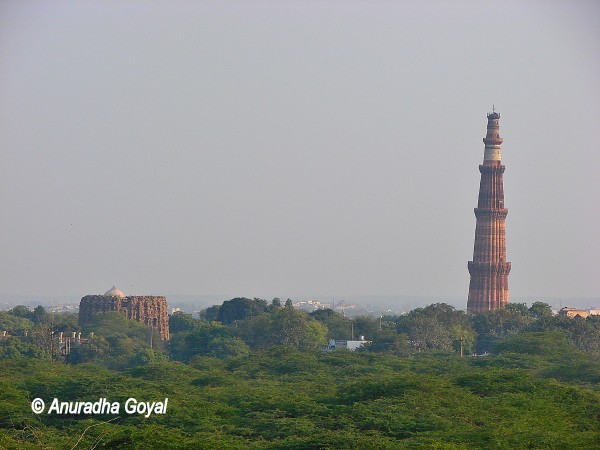
Qutub Minar View from Lal Kot
So the site was excavated, probably the details of the excavation are not well known. You get some very different views of Qutub Minar from Lal Kot walls. You get a view of Qutub Minar and Alai-Minar. One can well imagine if that Alai-Minar was completed, how it would have dwarfed the Qutub Minar. From one angle you see a small dome on top of an unfinished Minar. From some angles, Qutub Minar seems to be growing out of the greenery. You can see the top view of Sanjay Van where the treetops give the feeling of being a green carpet. And make you forget that you are well within the megacity of Delhi.

Sam Miller, the author who loves to walk around Delhi, guided a group of 11 people on this walk. Thank you, Sam, for taking us on this very unusual walk.
Recommend you to read the following travel blog on Places to visit in Delhi.
Walk through the aromas of Khari Baoli






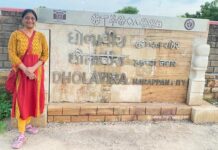
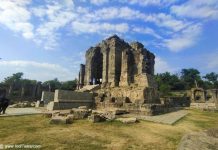





Hi,
I was looking around on the web to figure out exactly where i could find the ruins of Lal Kot. Now thanks to you, i have a fair idea. I am a student of history with a particular fondness for the history of Delhi. Couple that with an over enthusiastic photographer and there you have me, a nut-job.
Would you know anyone who takes people on walks to Lal Kot and Surajkund (which is where i am sure you know, starts the history of Delhi)? It would be a great help.
Thanks and please do keep these posts coming. they are a treasure.
No, I am not aware of anyone who walks around either Lal Kot or Surajkund. I am yet to visit Surajkund for my walk and yes I am aware of its history.
Thanks for visiting and keep coming back.
hi i was searching the web for lal kot i am keen to know more about prithviraj chauhan 3 but cant find much if happen to visit his architectures or come acrss his books in future do inform me i will be greatful i am it engg. jst fond of history thanks